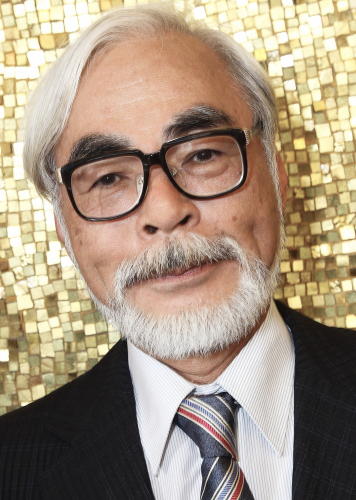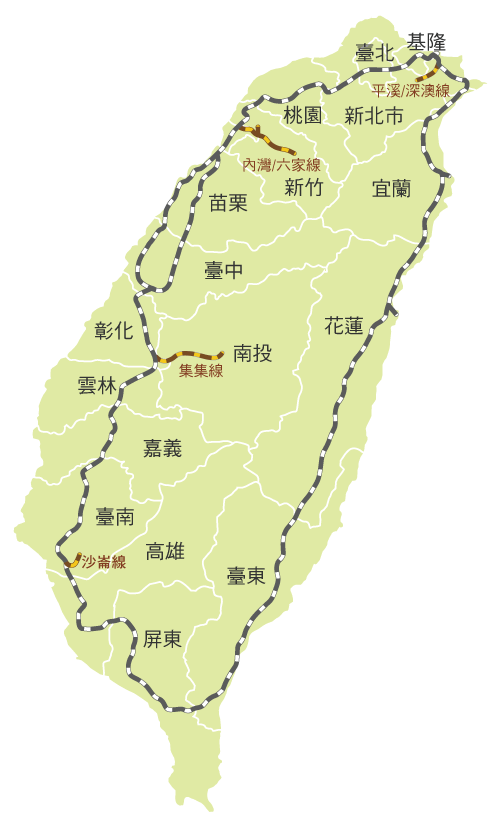|
Jiufen
Jiufen, also spelled Jioufen or Chiufen (), is a seaside mountain area in Ruifang District, New Taipei City, Taiwan. History During the first years of the Qing Dynasty, the isolated village housed nine families, thus the village would request "nine portions" every time shipments arrived from town. Later ''Káu-hūn-á'' () would become the name of the village. Despite the earliest reference to the production of gold in the island dating to 1430, and multiple rediscoveries by early inhabitants, visiting Japanese, Dutch occupiers, and Koxinga's retainers, awareness of the wealth of Taiwan's gold districts did not develop until the late Qing era. In 1890, workmen discovered flakes of gold while constructing the new Taipeh-Kelung railway, and in 1893 a rich placer district was discovered in the hills of ''Kau-hun'' that produced several kilograms of gold a day. In the next year, the promise became greater than ever after a Chinese "expert" with experience gained in California foun ... [...More Info...] [...Related Items...] OR: [Wikipedia] [Google] [Baidu] |
A City Of Sadness
''A City of Sadness'' () is a 1989 Taiwanese historical drama directed by Hou Hsiao-hsien. It tells the story of a family embroiled in the " White Terror" that was wrought on the Taiwanese people by the Kuomintang government (KMT) after their arrival from mainland China in the late 1940s, during which thousands of Taiwanese and recent emigres from the Mainland were rounded up, shot, and/or sent to prison. The film was the first to deal openly with the KMT's authoritarian misdeeds after its 1945 takeover of Taiwan, which had been restored to China following Japan's defeat in World War II, and the first to depict the February 28 Incident of 1947, in which thousands of people were massacred by the KMT. ''A City of Sadness'' was the first (of three) Taiwanese films to win the Golden Lion award at the Venice Film Festival, and is often considered Hou's masterpiece. The film was selected as the Taiwanese entry for the Best Foreign Language Film at the 62nd Academy Awards, but was ... [...More Info...] [...Related Items...] OR: [Wikipedia] [Google] [Baidu] |
Ruifang District
Ruifang District () is a suburban district in eastern New Taipei City, Taiwan. History During Japanese rule, Ruifang was called , and was administered as part of of Taihoku Prefecture. Mining was an important industry in Ruifang (then known as ''Sui-hong'') in the early 20th century. Gold was mined in Kyūfun and Kinkaseki while coal was mined in ''Kau-tong'' ( 猴硐; ''Houtong''). After the handover of Taiwan from Japan to the Republic of China in 1945, Ruifang was organized as an urban township of Taipei County. The mining sites became popular tourist destinations after 1990. On 25 December 2010, Taipei County was upgraded into a municipality named New Taipei City and Ruifang became a district of the municipality. In March 2012, it was named one of the ''Top 10 Small Tourist Towns'' by the Tourism Bureau. Administrative divisions There are thirty-four urban villages in the district which are divided between four election districts: *Election District One **Longt ... [...More Info...] [...Related Items...] OR: [Wikipedia] [Google] [Baidu] |
New Taipei City
New Taipei City is a special municipality located in northern Taiwan. The city is home to an estimated population of 3,974,683 as of 2022, making it the most populous city of Taiwan, and also the second largest special municipality by area, behind Kaohsiung. New Taipei City neighbours Keelung to the northeast, Yilan County to the southeast, and Taoyuan to the southwest, and completely encloses the city of Taipei. Banqiao District is its municipal seat and biggest commercial area. Before the Spanish and Dutch started arriving in Taiwan and set up small outposts in Tamsui in 1626, the area of present-day New Taipei City was mostly inhabited by Taiwanese indigenous peoples, mainly the Ketagalan people. From the late Qing era, the port of Tamsui was opened up to foreign traders as one of the treaty ports after the Qing dynasty of China signed the Treaty of Tianjin in June 1858. By the 1890s, the port of Tamsui accounted for 63 percent of the overall trade for entire ... [...More Info...] [...Related Items...] OR: [Wikipedia] [Google] [Baidu] |
Spirited Away
is a 2001 Japanese animated fantasy film written and directed by Hayao Miyazaki, animated by Studio Ghibli for Tokuma Shoten, Nippon Television Network, Dentsu, Buena Vista Home Entertainment, Tohokushinsha Film, and Mitsubishi and distributed by Toho.Sen To Chihiro No Kamikakushi ". http://www.bcdb.com, 13 May 2012 The film features the voices of Rumi Hiiragi, Miyu Irino, Mari Natsuki, Takeshi Naito, Yasuko Sawaguchi, [...More Info...] [...Related Items...] OR: [Wikipedia] [Google] [Baidu] |
Yilan Line
The Yilan Line () is the northern section of the Eastern Line of the Taiwan Railways Administration in Taiwan. It has a length of 95 km. History This railroad was completed in 1924 as the Giran-sen during Imperial Japanese rule over Taiwan. It was expanded to two tracks in the early 1980s. In 2000, it was electrified between Badu and Luodong, while the remaining part was completed in 2003. On 4 December 2020, a landslide buried a section of the line between Houtong and Ruifang Station in Ruifang District, resulting in the rail service disruption along the line. Emergency work was then carried out to remove the 10,000 m3 debris and to restore the overhead line An overhead line or overhead wire is an electrical cable that is used to transmit electrical energy to electric locomotives, trolleybuses or trams. It is known variously as: * Overhead catenary * Overhead contact system (OCS) * Overhead equipm .... On 14 December, the line was fully reopened for service. Statio ... [...More Info...] [...Related Items...] OR: [Wikipedia] [Google] [Baidu] |
Taiwan Railway Administration
Taiwan Railways Administration (TRA) is a railway operator in Taiwan. It is an agency of the Ministry of Transportation and Communications, responsible for managing, maintaining, and running conventional passenger and freight railway services on 1097 km of track in Taiwan. Since Taiwan is heavily urbanised with a high population density, railways have played an important part in domestic transportation since the late 19th century. Passenger traffic in 2018 was 231,267,955. The agency's headquarters are in Zhongzheng District, Taipei. Overview Railway services between Keelung and Hsinchu began in 1891 under China's Qing dynasty. Because the railway was completely rebuilt and substantially expanded under the operated by Formosa's Japanese colonial government (1895–1945), the network's Japanese influence and heritage persists. Similarities between the TRA and the Japan Railways (JR) companies can be noted in signal aspects, signage, track layout, fare controls, ... [...More Info...] [...Related Items...] OR: [Wikipedia] [Google] [Baidu] |
Rueifang Station
Ruifang () is a railway station in New Taipei, Taiwan served by Taiwan Railways. History The station was opened on 5 May 1919. Structure There are two island platforms and one side platform. See also * List of railway stations in Taiwan There are currently six operating railway systems in Taiwan: The two Inter-city rail systems, Taiwan Railways and Taiwan High Speed Rail, have several overlaps in station names. See below ''Taiwan High Speed Rail'' section for their relations i ... References 1919 establishments in Taiwan Railway stations in New Taipei Railway stations opened in 1919 Railway stations served by Taiwan Railways Administration {{Taiwan-railstation-stub ... [...More Info...] [...Related Items...] OR: [Wikipedia] [Google] [Baidu] |
1 Shuinandong Panorama 2015b
1 (one, unit, unity) is a number representing a single or the only entity. 1 is also a numerical digit and represents a single unit of counting or measurement. For example, a line segment of ''unit length'' is a line segment of length 1. In conventions of sign where zero is considered neither positive nor negative, 1 is the first and smallest positive integer. It is also sometimes considered the first of the infinite sequence of natural numbers, followed by 2, although by other definitions 1 is the second natural number, following 0. The fundamental mathematical property of 1 is to be a multiplicative identity, meaning that any number multiplied by 1 equals the same number. Most if not all properties of 1 can be deduced from this. In advanced mathematics, a multiplicative identity is often denoted 1, even if it is not a number. 1 is by convention not considered a prime number; this was not universally accepted until the mid-20th century. Additionally, 1 is the ... [...More Info...] [...Related Items...] OR: [Wikipedia] [Google] [Baidu] |
Taipei
Taipei (), officially Taipei City, is the capital and a special municipality of the Republic of China (Taiwan). Located in Northern Taiwan, Taipei City is an enclave of the municipality of New Taipei City that sits about southwest of the northern port city of Keelung. Most of the city rests on the Taipei Basin, an ancient lakebed. The basin is bounded by the relatively narrow valleys of the Keelung and Xindian rivers, which join to form the Tamsui River along the city's western border. The city of Taipei is home to an estimated population of 2,646,204 (2019), forming the core part of the Taipei–Keelung metropolitan area, which includes the nearby cities of New Taipei and Keelung with a population of 7,047,559, the 40th most-populous urban area in the world—roughly one-third of Taiwanese citizens live in the metro district. The name "Taipei" can refer either to the whole metropolitan area or just the city itself. Taipei has been the seat of the ROC central governm ... [...More Info...] [...Related Items...] OR: [Wikipedia] [Google] [Baidu] |
Hayao Miyazaki
is a Japanese animator, director, producer, screenwriter, author, and manga artist. A co-founder of Studio Ghibli, he has attained international acclaim as a masterful storyteller and creator of Japanese animated feature films, and is widely regarded as one of the most accomplished filmmakers in the history of animation. Born in ward of Tokyo, expressed interest in manga and animation from an early age, and he joined Toei Animation in 1963. During his early years at Animation he worked as an in-between artist and later collaborated with director . Notable films to which contributed at include ''Doggie March'' and '' Gulliver's Travels Beyond the Moon''. He provided key animation to other films at , such as '' Puss in Boots'' and '' Animal Treasure Island'', before moving to A-Pro in 1971, where he co-directed '' Lupin the Third Part I'' alongside . After moving to (later known as Nippon Animation) in 1973, worked as an animator on '' World Masterpiece Theater'', ... [...More Info...] [...Related Items...] OR: [Wikipedia] [Google] [Baidu] |


.jpg)





